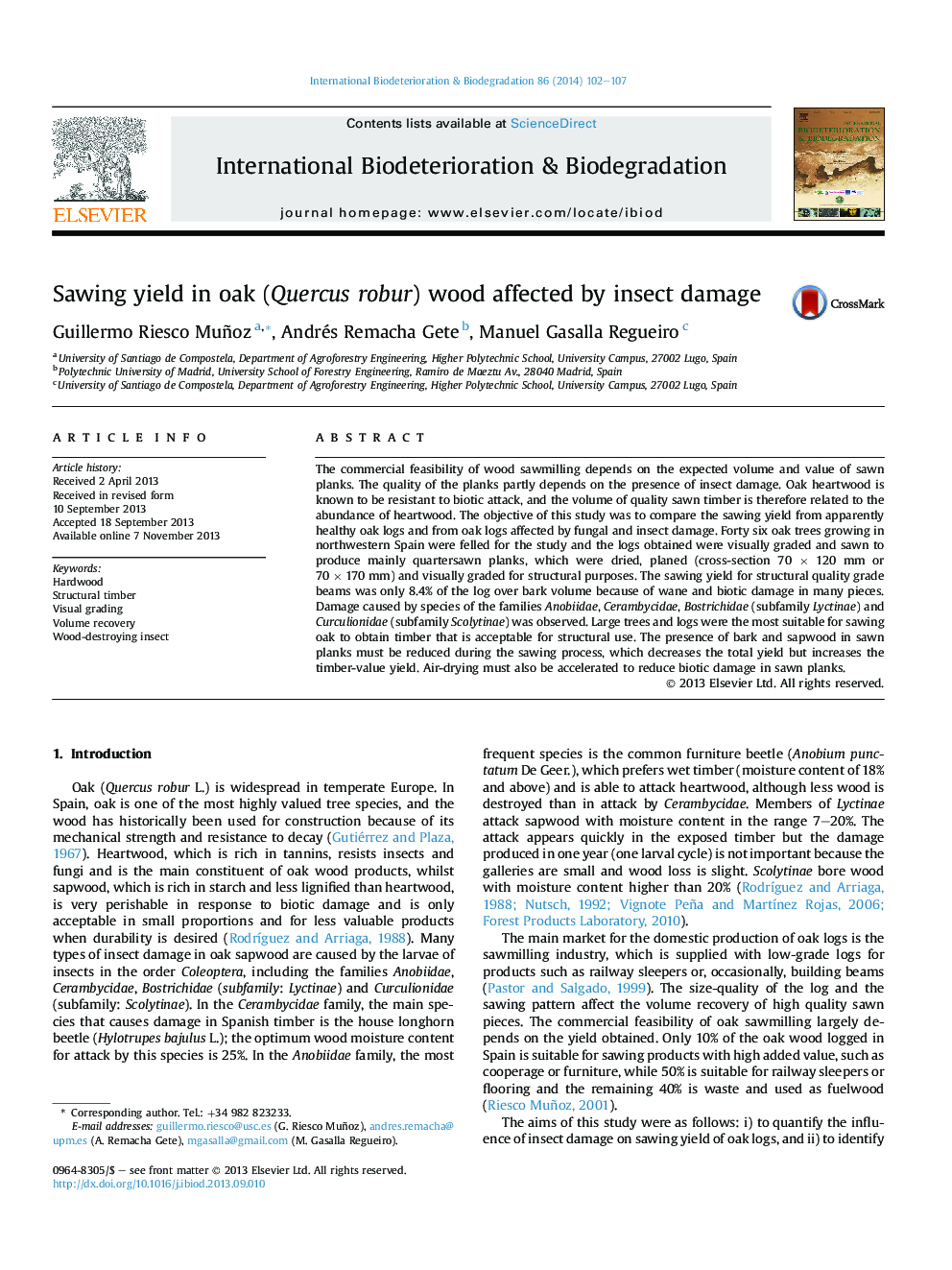| کد مقاله | کد نشریه | سال انتشار | مقاله انگلیسی | نسخه تمام متن |
|---|---|---|---|---|
| 4364859 | 1301727 | 2014 | 6 صفحه PDF | دانلود رایگان |

• The presence of insect damage is the main cause of rejection in the visual grading of oak beams for structural purposes.
• Longhorn beetles and Anobiidae are the main insect families involved in the oak wood decay.
• Some sawing patterns improve the proportion of healthy sawn pieces in the volume recovery.
The commercial feasibility of wood sawmilling depends on the expected volume and value of sawn planks. The quality of the planks partly depends on the presence of insect damage. Oak heartwood is known to be resistant to biotic attack, and the volume of quality sawn timber is therefore related to the abundance of heartwood. The objective of this study was to compare the sawing yield from apparently healthy oak logs and from oak logs affected by fungal and insect damage. Forty six oak trees growing in northwestern Spain were felled for the study and the logs obtained were visually graded and sawn to produce mainly quartersawn planks, which were dried, planed (cross-section 70 × 120 mm or 70 × 170 mm) and visually graded for structural purposes. The sawing yield for structural quality grade beams was only 8.4% of the log over bark volume because of wane and biotic damage in many pieces. Damage caused by species of the families Anobiidae, Cerambycidae, Bostrichidae (subfamily Lyctinae) and Curculionidae (subfamily Scolytinae) was observed. Large trees and logs were the most suitable for sawing oak to obtain timber that is acceptable for structural use. The presence of bark and sapwood in sawn planks must be reduced during the sawing process, which decreases the total yield but increases the timber-value yield. Air-drying must also be accelerated to reduce biotic damage in sawn planks.
Journal: International Biodeterioration & Biodegradation - Volume 86, Part B, January 2014, Pages 102–107